-
Cadieux, Geneviève (b.1955, Montreal)
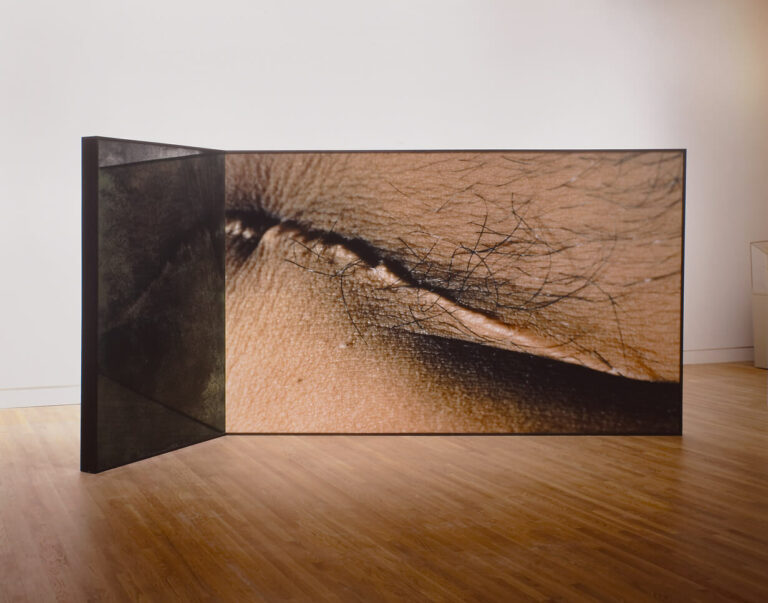
Montreal-based Cadieux is known for her large-scale photographic works exploring the body. Close-up views of wounds, such as scars and bruises, refer to experiences of suffering and trauma and their manifestations on the body. Cadieux is a professor at Concordia University and in 2011 was a recipient of a Governor General’s Award for Visual and Media Arts.
Image: Geneviève Cadieux, Memory Gap, an Unexpected Beauty, 1988, dye-coupler print and mirror on wood, assembled: 208 x 472 x 14 cm; photograph: 208 x 335 x 14 cm; mirror: 208 x 137 x 14 cm, National Gallery of Canada, Ottawa.
For further reading, see:
Cadieux, Geneviève et al. Geneviève Cadieux. Vancouver: Morris and Helen Belkin Art Gallery, 1999.
Cadieux, Geneviève, Annelie Pohlen, and Jan Foncé. “Geneviève Cadieux: A Situation.” In Geneviève Cadieux. Ostfildern: Cantz Verlag, 1994.

-
Campeau, Michel (b.1948, Montreal)
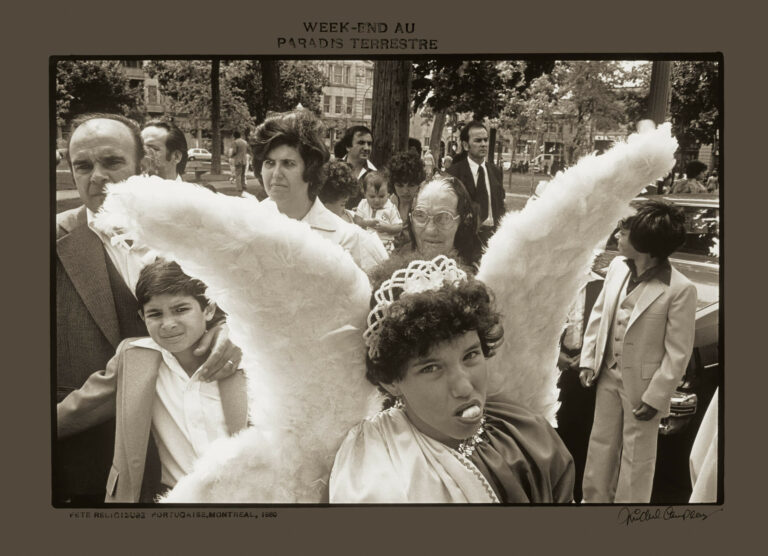
Campeau is a Montreal photographer and one of the founders of Groupe d’action photographique (GAP). The collective was formed in 1971 by Campeau, Serge Laurin (1942–2017), and Roger Charbonneau (b.1947) to document Quebec society through intimate representations of community. Campeau’s work explores questions related to the history and practice of photography, particularly in relation to autobiography and family, often using the book form. With GAP, Campeau participated in the documentary project that captured rural community life in Quebec, Disraeli: une expérience humaine en photographie (1972). Campeau has published numerous photographic books, including Les tremblements du coeur (1988) and Éclipses et labyrinthes, 1988–1993 (1993).
Image: Michel Campeau, Fête religieuse portugaise, Montréal, Québec, from the series Week-end au Paradis Terrestre!, 1980, silver gelatin print, 40.4 x 50.5 cm. © Michel Campeau / CARCC Ottawa 2023.
For further reading, see:
Campeau, Michel. Michel Campeau : éclipses et labyrinthes. S.l.: s.n., 1991.
Campeau, Michel, and Richard Baillargeon. Les tremblements du coeur. Quebec City and Montreal: VU & Éditions Saint-Martin, 1988.
Dessureault, Pierre. “Images of Montreal: Some Notable Projects on Montreal Neighbourhoods.” Ciel Variable 105 (Winter 2017). cielvariable.ca/en/issues/ciel-variable-105-montrealities/.
———. Michel Campeau : les images volubiles travaux photographiques, 1971–1996 / Eloquent Images Photographic Works, 1971–1996. Ottawa: Canadian Museum of Contemporary Photography, 1996.
Jongue, Serge. “The New Photographic Order,” 33–50. In 13 Essays on Photography, edited by Geoffrey James. Ottawa: Canadian Museum of Contemporary Photography, 1988.
Langford, Martha. “Faith, Hope and Verity: Michel Campeau’s Photography and Realism.” Border Crossings 32, no. 4 (2013): 50–59.
Szilasi, Doreen Lindsay. Disraeli : une expérience humaine en photographie. Quebec City: Les publications de l’Imagerie populaire, 1974.

-
Carr, Rosetta Ernestine (1845, Drummond Township, Ontario–1907, Ottawa)
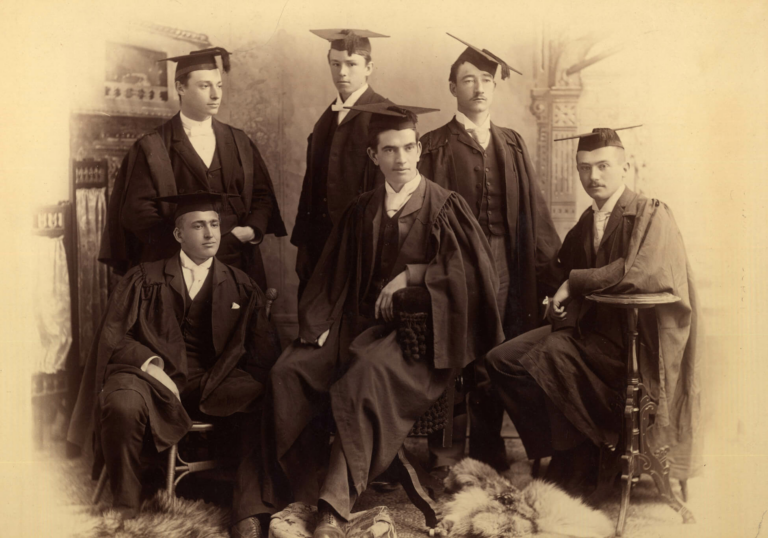
Born in Ontario and trained in photography in the U.S. and at Notman’s studio in Ottawa, Carr moved to Winnipeg in 1883 with her husband. She purchased and ran the American Art Gallery, a large commercial studio, for sixteen years, winning acclaim for her portraits of children and commissions from the government. In 1893, she won exclusive rights to photograph the Winnipeg Industrial Exhibition, which caused displeased competitors to boycott the event. In 1889, Carr sold her gallery and lived her final years in Ottawa, but many of her photographs can be found in the Archives of Manitoba in Winnipeg.
Image: Rosetta Ernestine Carr, Manitoba University Natural Science class, senior BA, 1893, black and white photograph, University of Manitoba, Faculty of Medicine Archives, Winnipeg.
For further reading, see:
Berry, Virginia G. “Rosetta Ernestine Watson (Carr).” In Canada’s Entrepreneurs: From the Fur Trade to the 1929 Stock Market Crash; Portraits from the Dictionary of Canadian Biography Under the Direction of John English and Réal Bélanger, edited by J. Andrew Ross and Andrew D. Smith, 513–15. Toronto: University of Toronto Press, 2011.
Close, Susan. Framing Identity: Social Practices of Photography in Canada, 1880–1920. Winnipeg: Arbeiter Ring Publishing, 2007.

-
Cassidy, Eugene Haanel (1903, Tokyo, Japan–1980, Nevada City, California)
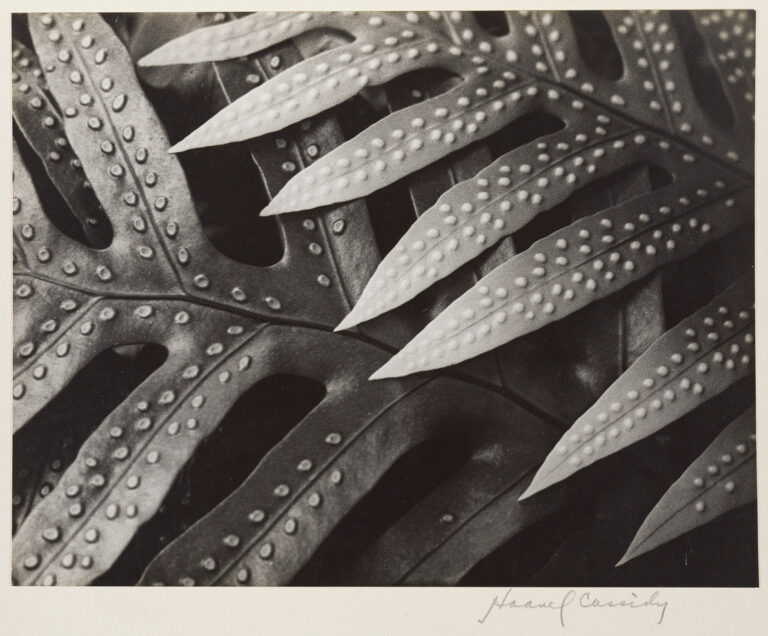
Cassidy was born in Japan to Canadian parents but grew up in Canada and owned a studio in Toronto in the 1930s. In his early artistic work, he aspired to capture transcendental images of the natural world. His series Plant Form, 1938, represents foliage as abstract compositions through close-up images that highlight form, pattern, and texture. His exhibition Plant Patterns in Hawaii and Japan at the Art Gallery of Toronto (now the Art Gallery of Ontario), 1938, was one of the AGO’s earliest solo exhibitions of photographic works. In 1944 he moved to New York to work as a magazine photographer for Condé Nast.
Image: Eugene Haanel Cassidy, Plant Form Leaves with Circular Protrusion, 1938, chloro bromide print, 39.9 x 50.9 cm, Art Gallery of Ontario, Toronto.
For further reading, see:
Sutnik, Maia-Mari, and Ruth Bains Hartmann. E. Haanel Cassidy: Photographs 1933–1945. Toronto: Art Gallery of Ontario, 1981.

-
Clark, June (Clark-Greenberg) (b.1941, New York)
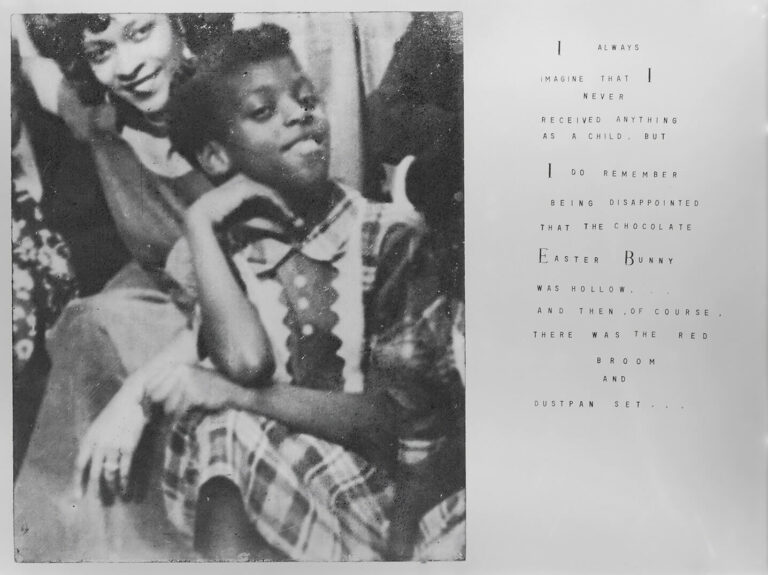
Clark grew up in Harlem in New York City and immigrated to Toronto in 1968 with her husband, who was escaping the draft during the Vietnam War. She learned photography as part of the Women’s Photography Co-op based out of the Baldwin Street Gallery in the early 1970s. Clark’s earliest work consisted of portraits and city scenes, including a series of photographs taken in Cuba. Around the time she entered the MFA program at York University in 1988, she began to experiment with photographic form and content. In Formative Triptych, 1989, Clark made photo etchings of historical photographs and then reworked those images into transparencies displayed on lightboxes. The presentation may gesture to advertising, but the accompanying text contrasts sharply with the positive messaging of marketing. Two enlarged snapshots of Clark as a child and a portrait of blues singer Bessie Smith are set beside words in which Clark meditates on the experience of racism and the complications of memory.
Image: June Clark, Formative Triptych (detail), 1989, three duratrans transparencies in lightboxes (each): 111.5 x 152.2 cm, Art Gallery of Ontario, Toronto. Photo of Bessie Smith © Carl Van Vechten Trust.
For further reading, see:
Lee, Yaniya. “Review: Unrequited Love.” Canadian Art, February 19, 2021. canadianart.ca/reviews/unrequited-love/.
“Meet Toronto Artist June Clark.” AGOInsider, November 1, 2016. ago.ca/agoinsider/meet-toronto-artist-june-clark.
“Weekly Wednesday Conversation: Artist Spotlight—June Clark.” Toronto: Art Gallery of Ontario, Wednesday July 22, 2020. Video, 39:41 minutes. youtube.com/watch?v=v_hOC8We9xs&t=282s.

-
Cohen, Sorel (b.1936, Montreal)
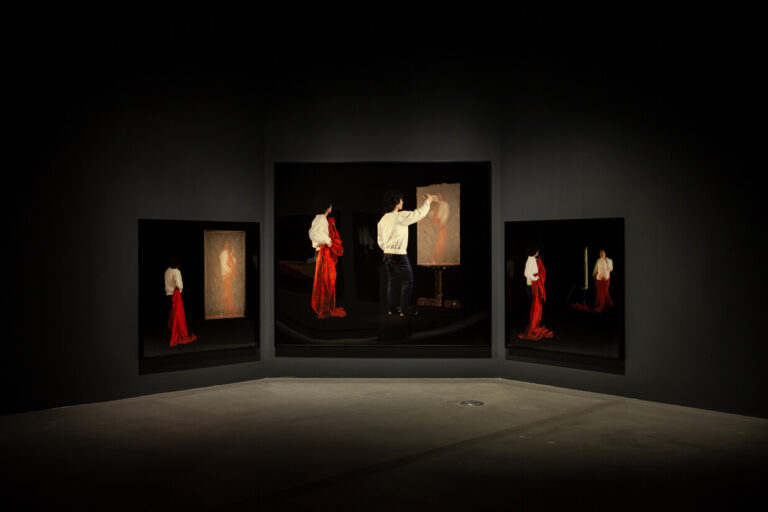
Cohen is a Montreal-based photographer whose artistic practice draws on the history of art, performance, and feminist theory. Part of a broader postmodern movement in photography in the 1970s, Cohen appropriated historical artistic techniques in her series of motion studies, including The Rite Matinal, 1977, and After Bacon/Muybridge, 1980. In An Extended and Continuous Metaphor, 1983–86, Cohen challenges the traditionally male and female roles of artist and subject by performing both for the camera.
Image: Sorel Cohen, An Extended and Continuous Metaphor No. 6, 1983, three dye-coupler prints, centre panel: 179.5 x 205 cm; side panels: 119 x 119 cm each, National Gallery of Canada, Ottawa. © Sorel Cohen / CARCC Ottawa 2023.
For further reading, see:
Cohen, Sorel. Sorel Cohen. Montreal: Musée d’art contemporain de Montréal, 1986.
Sloan, Johanne. “Relations, 1988: Photographic, Postmodern, Feminist.” Journal of Canadian Art History 36, no. 1 (2015): 181–201.

-
Comiter, Alvin (b.1948, New York)
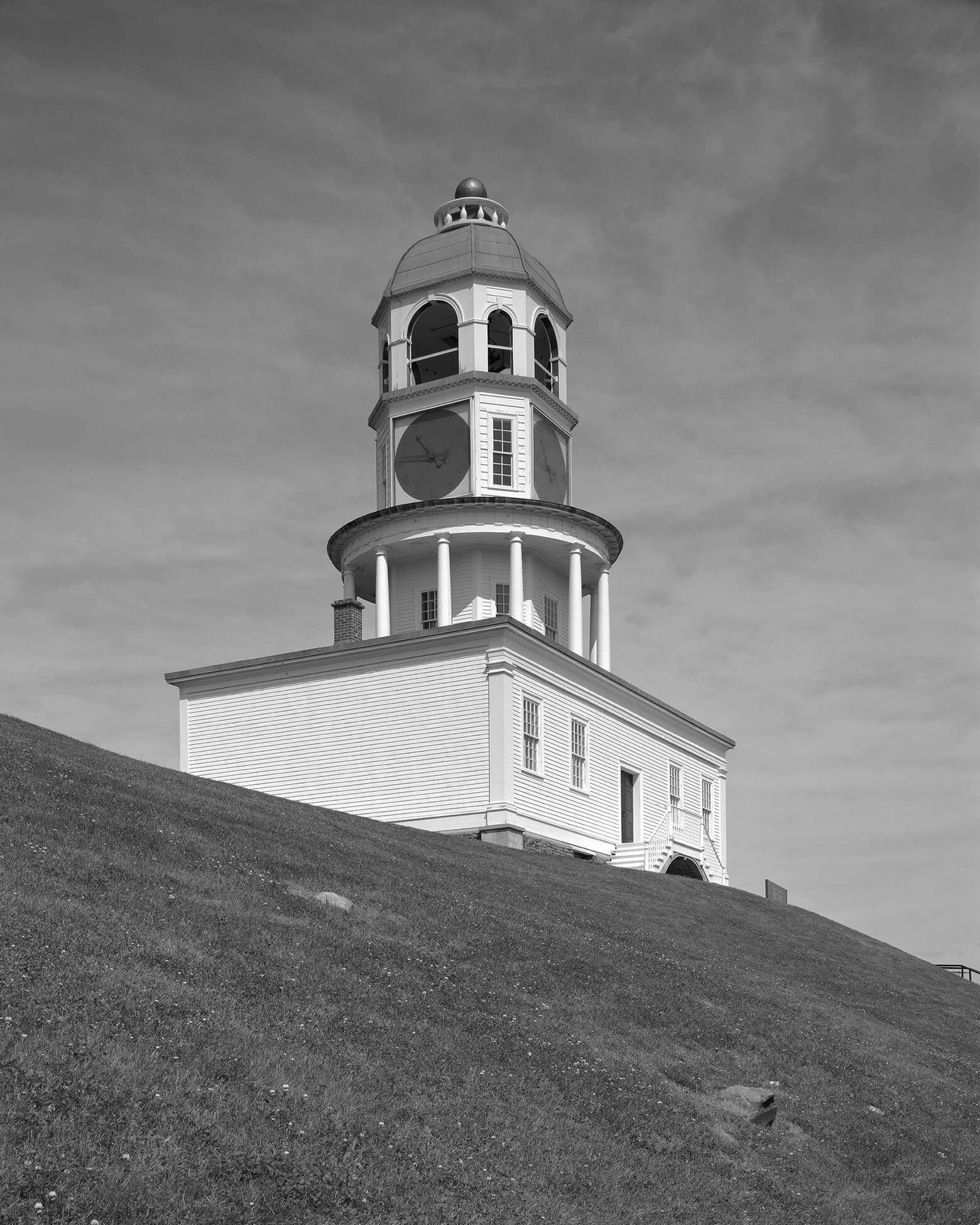
Comiter emigrated from the U.S. and taught at NSCAD University in Halifax. His detailed photographs of buildings in Nova Scotia were originally framed as part of conceptual photography’s interest in typology. The series was the subject of a solo exhibition at MSVU Art Gallery in Halifax in 1989. Over time, the work has been discussed more in terms of architectural record and preservation, including in Landmarks: Historic Buildings of Nova Scotia (1994).
Image: Alvin Comiter, Old Town Clock, Citadel Hill, Halifax, 1988, gelatin silver print, 35.3 x 27.9 cm; image: 30.6 x 24.2 cm, CMCP Collection, National Gallery of Canada, Ottawa.
For further reading, see:
Comiter, Alvin. Alvin Comiter: Photographs. Halifax: Dalhousie Art Gallery, 1984.
Pacey, Elizabeth, and Alvin Comiter. Landmarks: Historic Buildings of Nova Scotia. Halifax: Nimbus, 1994.

-
Cousineau, Sylvain P. (1949, Arvida, Quebec–2013, London)
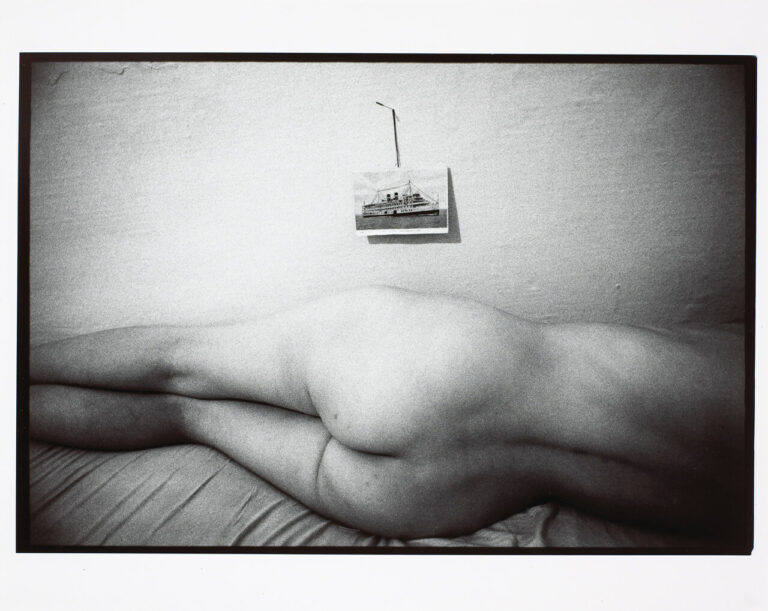
Cousineau lived and worked in Montreal, Ottawa, France, and England. He was a conceptual artist who produced paintings, photography, and installation art. His photographic work of the 1970s and 1980s includes a series of black and white portraits, landscapes, and street photography. In 1977 he published Mona Nima, a poetic and intimate collection of photographs inspired by John Max’s earlier photo book, Open Passport (1973). Mona Nima is composed of thirty-four black and white images, including The Boat, 1972. He taught at the University of Moncton and the University of Ottawa.
Image: Sylvain P. Cousineau, The Boat, 1973, printed 1976, gelatin silver print, 20.3 x 25.3 cm; image: 15.8 x 23.4 cm, National Gallery of Canada, Ottawa.
For further reading, see:
Cousineau, Sylvain P. Mona Nima. Almonte: Powys Press, 1977.
Cousineau, Sylvain P., and Philip Fry. Sylvain P. Cousineau: Photographs and Paintings. Regina: Dunlop Art Gallery in collaboration with the Walter Phillips Gallery, 1980.
Hardy-Vallée, Michel. “The Photobook as Variant: Exhibiting, Projecting, and Publishing John Max’s Open Passport.” History of Photography 43, no. 4 (2019): 399–421.

-
Cox, Horace Gordon (H.G.) (1885, Kidderminster, England–1972, Vancouver)
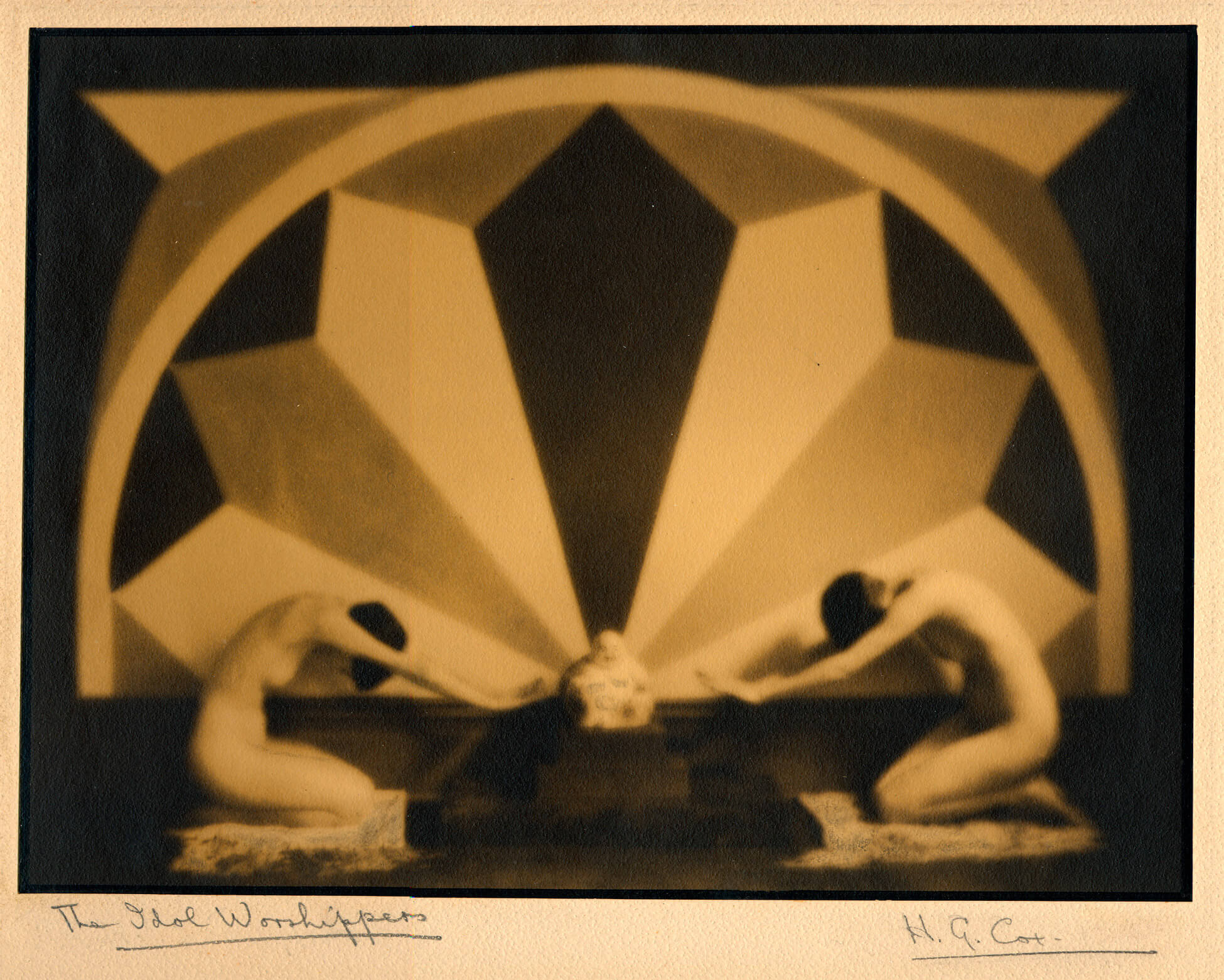
An engineer by training, Cox spent almost three decades working for the British Columbia Department of Public Works. Shortly after taking up photography in 1924, he became an active member of West Coast camera clubs and of the international Pictorialist salons, and his work was included in several solo exhibitions at the Vancouver Art Gallery. His photographs share the Pictorialists’ preference for soft focus and classical nudes, but they are also rigorously designed around Cox’s ideas of “dynamic symmetry.” Most of his photographs remained with his family after his death and his contributions were largely forgotten until a 2003 exhibition at Presentation House Gallery in Vancouver.
Image: H.G. Cox, The Idol Worshippers (Nellie Near and Cora Pasmore), 1928, sepia-toned gelatin silver print.
For further reading, see:
Jeffries, Bill. “Athens on the Fraser: The Photographs of H.G. Cox.” North Vancouver: Presentation House Gallery, 2003. thepolygon.ca/wp-content/uploads/2017/10/2003-H.G.-Cox-brochure.pdf.
Jefferies, Bill, et al. H.G. Cox: British Columbia Pictorialist. North Vancouver: Presentation House Gallery, 2004.

-
Cumming, Donigan (b.1947, Danville, Virginia)
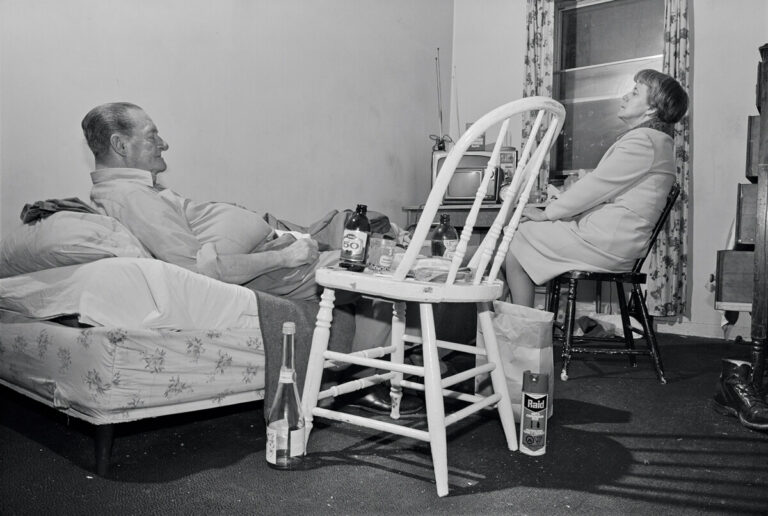
Donigan Cumming is a Canadian photographer and multimedia artist who lives and works in Montreal. His early work explored the social and ethical implications of the observational image by reinterpreting the clichés of modernist photography. In his series Reality and Motive in Documentary Photography, Parts 1-3, 1982–86, people pose in domestic and institutional interiors, as well as suburban and cottage properties. Cumming’s absurdist theatrical approach tended to emphasize the idiosyncrasies of his subjects, which provoked critical debate.
Image: Donigan Cumming, Untitled (August 12, 1983), 1983, from Reality and Motive in Documentary Photography, Parts 1-3, 1982–86, gelatin silver print, 25.7 x 37.8 cm.
For further reading, see:
Bogardi, George. “In Camera: The Photography of Donigan Cumming.” In 13 Essays on Photography, edited by Geoffrey James et al., 66–78. Ottawa: Canadian Museum of Contemporary Photography, 1990.
Graham, Robert. “Documentary and the Powers of Description / L’autorité de la description dans le documentaire.” In Reality and Motive in Documentary Photography / La réalité et le dessein dans la photographie documentaire, edited by Martha Langford, 6–13. Ottawa: Canadian Museum of Contemporary Photography, 1986.
Langford, Martha. “Donigan Cumming: Crossing Photography’s Chalk Lines / Donigan Cumming : au mépris des frontières artificielles.” In Reality and Motive in Documentary Photography / La réalité et le dessein dans la photographie documentaire, edited by Martha Langford, 14–36. Ottawa: Canadian Museum of Contemporary Photography, 1986.
Toussignant, Zoë. “Refuse and Refusal in the Art of Donigan Cumming.” In Body-to-Body: The Works of Donigan Cumming. Montreal: Videographe, 2020. publications.vitheque.com/en/ap/body-to-body-the-works-of-donigan-cumming.

-
Curtin, Walter (1911, Vienna–2007, Toronto)
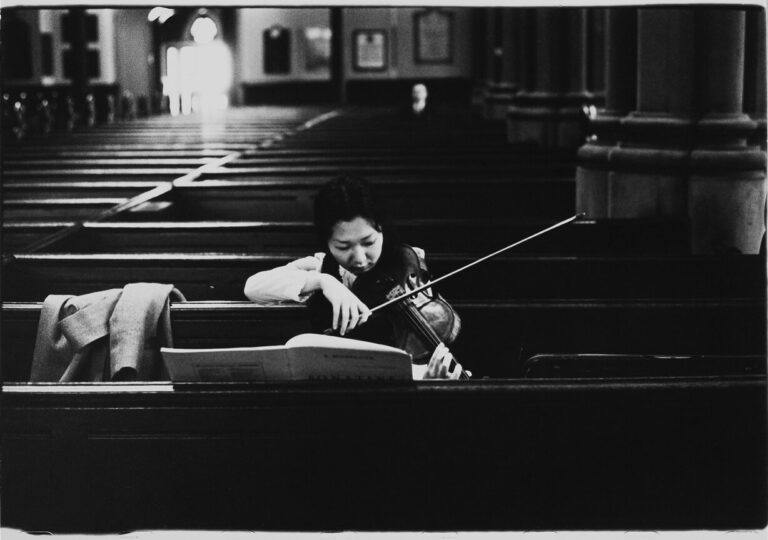
Curtin immigrated to Canada in 1952 and worked as a photojournalist and commercial photographer in Toronto. He produced photo stories for the Still Photography Division of the National Film Board of Canada (NFB), eventually shifting from an 8 x 10 to a more agile 35mm camera to capture the vitality of performance. In the 1970s he began a project documenting the classical music scene in Toronto, titled The Musicians. Photos from this project were featured in the 1982 NFB exhibition of the same name.
Image: Walter Curtin, Fujiko Imajishi Rehearsing for a Canadian Broadcasting Commission Recording at St. James, Toronto, 1973, printed 1974, gelatin silver print, 40.5 x 50.7 cm; image: 24 x 35.1 cm, CMCP Collection, National Gallery of Canada, Ottawa.
For further reading, see:
Curtin, Walter, and Kenneth Winters. Curtin Call: A Photographer’s Candid View of 25 Years of Music in Canada. Toronto: Exile Editions, 1994.
Hanna, Martha. Walter Curtin: A Retrospective. Ottawa: Canadian Museum of Contemporary Photography, 1985.

-
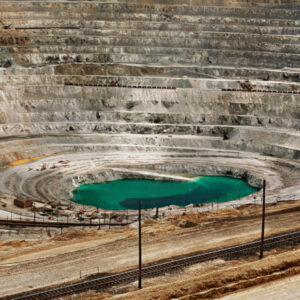 About the Authors
About the Authors
This book is written by art historians Sarah Bassnett and Sarah Parsons.
-
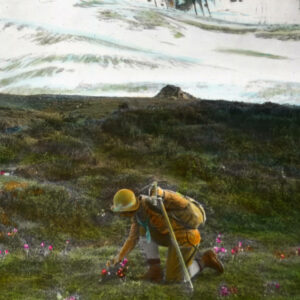 More Online Art Books
More Online Art Books
Read online or download the ACI’s incredible library of art books for free in French and English.
-
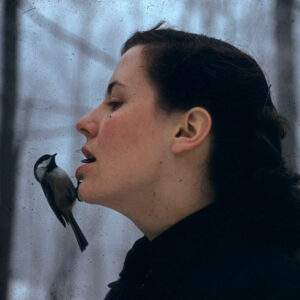 Preface
Preface
Photography has become so thoroughly integrated into our everyday experience that it may be hard to imagine life without it.
